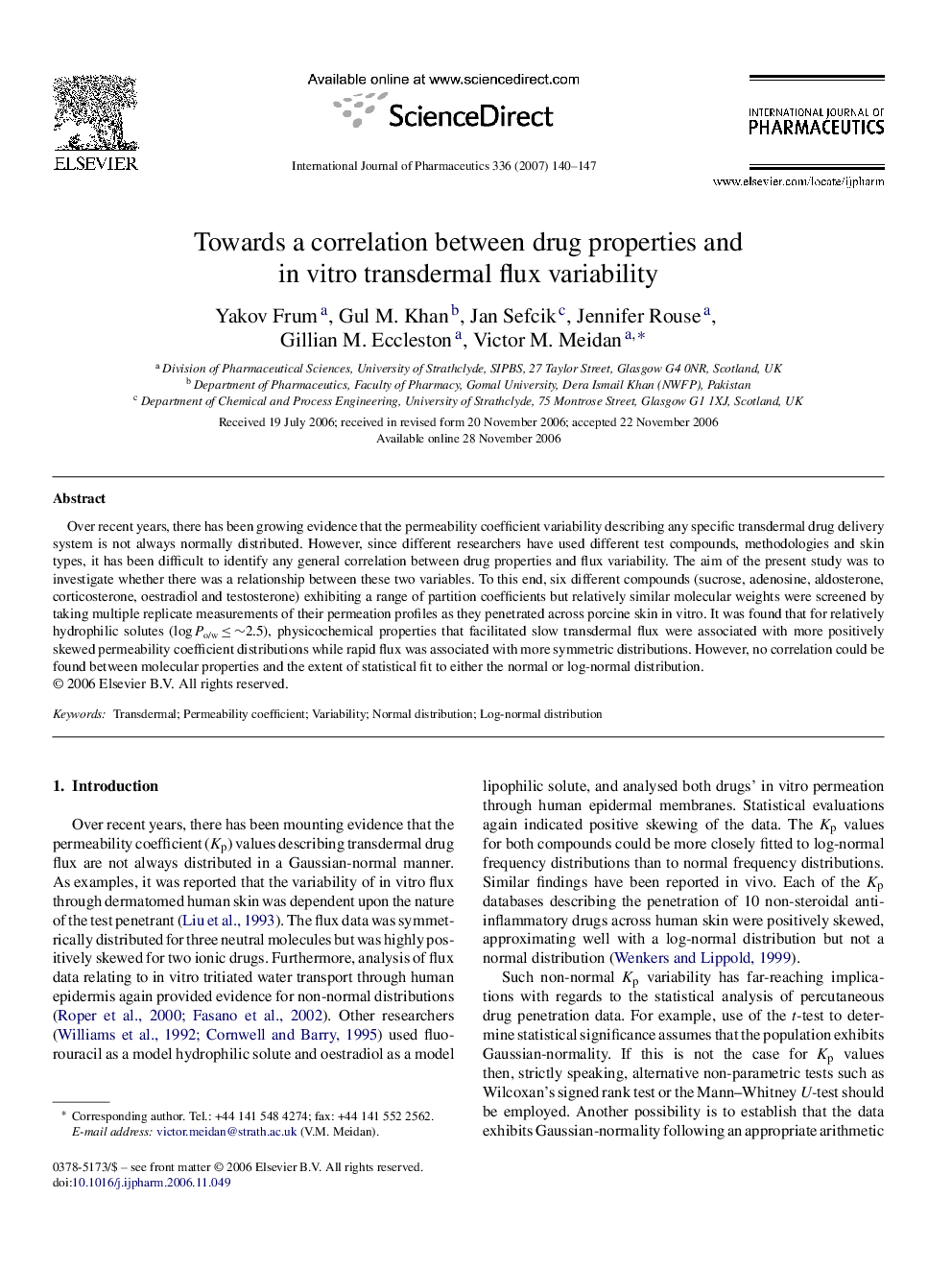| Article ID | Journal | Published Year | Pages | File Type |
|---|---|---|---|---|
| 2506235 | International Journal of Pharmaceutics | 2007 | 8 Pages |
Over recent years, there has been growing evidence that the permeability coefficient variability describing any specific transdermal drug delivery system is not always normally distributed. However, since different researchers have used different test compounds, methodologies and skin types, it has been difficult to identify any general correlation between drug properties and flux variability. The aim of the present study was to investigate whether there was a relationship between these two variables. To this end, six different compounds (sucrose, adenosine, aldosterone, corticosterone, oestradiol and testosterone) exhibiting a range of partition coefficients but relatively similar molecular weights were screened by taking multiple replicate measurements of their permeation profiles as they penetrated across porcine skin in vitro. It was found that for relatively hydrophilic solutes (log Po/w ≤ ∼2.5), physicochemical properties that facilitated slow transdermal flux were associated with more positively skewed permeability coefficient distributions while rapid flux was associated with more symmetric distributions. However, no correlation could be found between molecular properties and the extent of statistical fit to either the normal or log-normal distribution.
